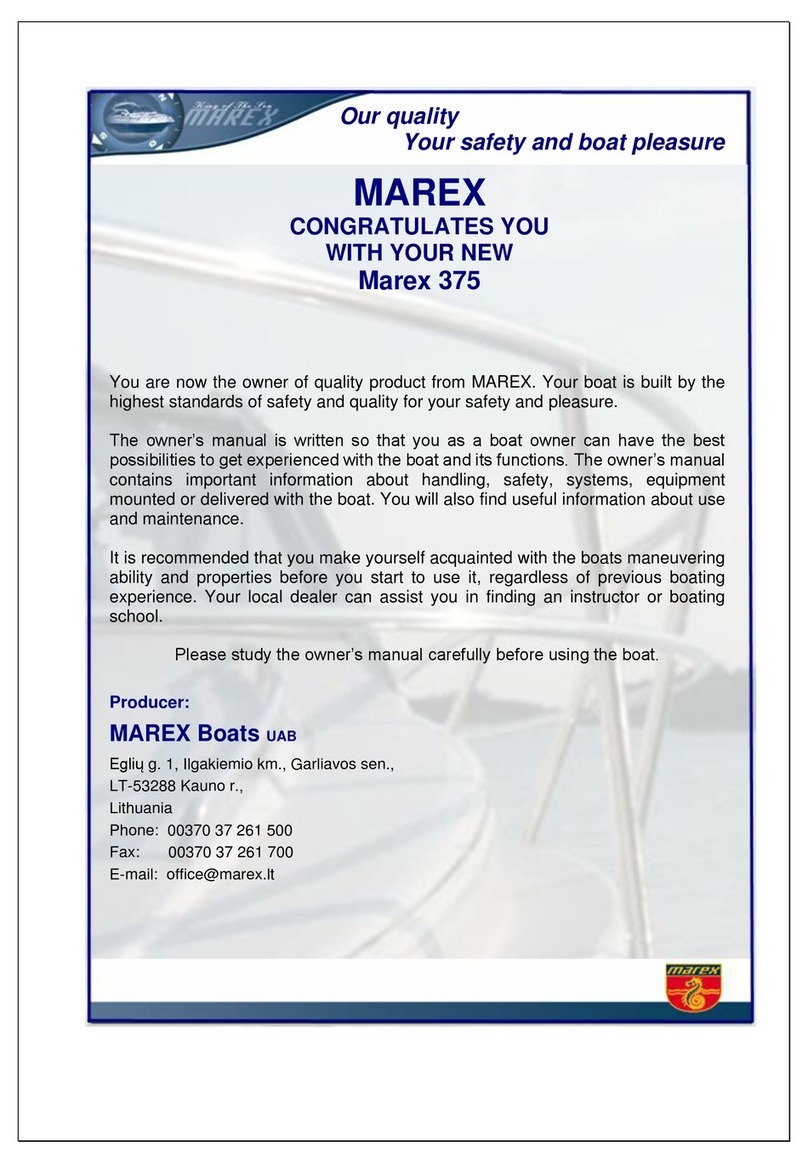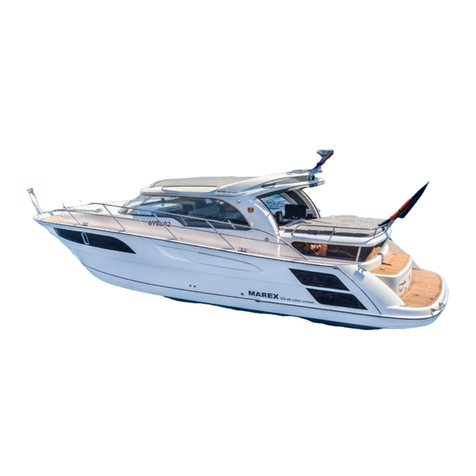
0.1.9 Common errors........................................................................................ 35
SECTION 4.08 0.29 SEPTIC SYSTEM/BLACK WATER SYSTEM .................................................... 35
0.1.10 Common errors...................................................................................... 36
SECTION 4.09 0.30 USE OF THE SEPTIC TANK .......................................................................... 37
SECTION 4.10 0.31 THE ELECTRIC SYSTEM .............................................................................. 38
0.1.11 Maintenance and controlling.................................................................. 40
0.1.12 Common errors...................................................................................... 41
SECTION 4.11 0.32 EXHAUST SYSTEM ..................................................................................... 41
SECTION 4.12 0.33 VENTILATION SYSTEM FOR THE ENGINE ...................................................... 42
SECTION 4.13 0.34 FIRE EXTINGUISHING SYSTEM..................................................................... 42
ARTICLE V. OPERATION........................................................................................................ 43
SECTION 5.01 0.35 STARTING THE ENGINE............................................................................... 44
SECTION 5.02 0.36 BATTERIES (LEAD ACCUMULATORS) .......................................................... 44
SECTION 5.03 0.37 SWITCH PANEL &CONNECTION SCHEMES................................................... 46
SECTION 5.04 0.38 FUSE PANEL.............................................................................................. 46
SECTION 5.05 0.39 MAIN SWITCH PANEL.................................................................................. 47
SECTION 5.06 0.40 WINDSCREEN WIPERS................................................................................ 48
SECTION 5.07 0.41 DASHBOARD INSTRUMENTATION INSTALLATION ACCESS ............................. 48
SECTION 5.08 0.42 MANEUVERING THE BOAT .......................................................................... 49
0.1.13 Maneuvering a boat in category B......................................................... 49
SECTION 5.09 0.43 THE ELECTRIC SYSTEM .............................................................................. 51
SECTION 5.10 0.44 SANITARY SYSTEM .................................................................................... 52
SECTION 5.11 0.45 OPERATING OTHER EQUIPMENT.................................................................. 53
0.1.14 Cooker and oven ................................................................................... 53
0.1.15 The Defroster......................................................................................... 53
0.1.16 The diesel heater................................................................................... 53
SECTION 5.12 0.46 HINTS AND ADVICES .................................................................................. 54
0.1.17 Lifting and storage in a “cradle” ............................................................. 54
0.1.18 Transporting the boat ............................................................................ 54
0.1.19 Mooring the boat.................................................................................... 54
0.1.20 Environmental issues ............................................................................ 55
ARTICLE VI. PERIODIC MAINTENANCE................................................................................ 55
SECTION 6.01 0.47 MAINTENANCE OF THE HULL ...................................................................... 55
0.1.21 Before placing the boat on water........................................................... 55
0.1.22 Before winter storage ............................................................................ 56
0.1.23 Normal maintenance ............................................................................. 56
SECTION 6.02 0.48 MAINTENANCE OF THE TEAK DECK ............................................................. 56
SECTION 6.03 0.49 MAINTENANCE OF THE ENGINE AND THE DRIVE............................................ 56
SECTION 6.04 0.50 MAINTENANCE OF THE STEERING SYSTEM................................................... 57
SECTION 6.05 0.51 FIRE EXTINGUISHERS................................................................................. 57
ARTICLE VII. PREPARING FOR THE SEASON....................................................................... 57
SECTION 7.01 0.52 GENERAL PREPARATION............................................................................ 57
SECTION 7.02 0.53 PREPARING THE ENGINE AND THE DRIVE..................................................... 58
SECTION 7.03 0.54 PREPARING THE STEERING ........................................................................ 58
SECTION 7.04 0.55 OTHER INSTALLATIONS.............................................................................. 58
SECTION 7.05 0.56 REMOVING RUST/CORROSION..................................................................... 59
ARTICLE VIII. WINTER STORAGE PREPARATION................................................................. 60
SECTION 8.01 0.57 BATTERIES ............................................................................................... 60
SECTION 8.02 0.58 THE HULL.................................................................................................. 61
SECTION 8.03 0.59 ENGINE AND DRIVE.................................................................................... 61





























